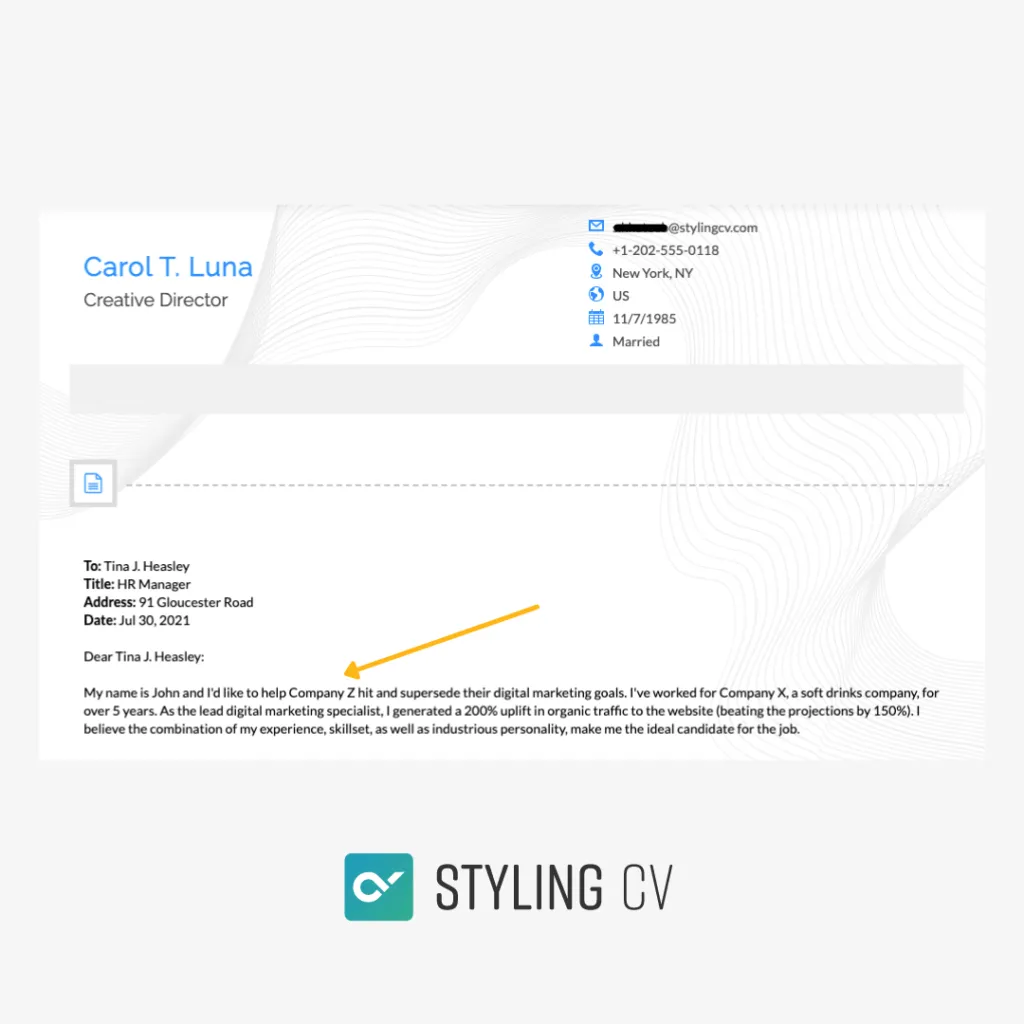Crafting a Compelling Resume Cover Letter Introduction
A well-crafted resume cover letter introduction is your first opportunity to captivate a potential employer and set the stage for a successful job application. It’s the handshake, the initial pitch, and the crucial element that determines whether the hiring manager will continue reading. A strong introduction immediately grabs attention, showcases your understanding of the role, and highlights your key qualifications. Neglecting this critical section can lead to your resume being overlooked, regardless of your skills and experience. This guide will walk you through the essential steps of creating an introduction that leaves a lasting positive impression, significantly boosting your chances of landing an interview.
Understanding the Purpose of a Cover Letter Introduction
The primary goal of a cover letter introduction is to hook the reader and encourage them to delve deeper into your qualifications. It’s not merely a formality; it’s a strategic tool to demonstrate your value and suitability for the role. The introduction should immediately convey your interest in the position, the company, and what you can offer. It should summarize your key strengths and provide a concise overview of your relevant experience. By effectively achieving these objectives, you’ll create a compelling narrative that keeps the hiring manager engaged and interested in exploring your application further.
Why Your Introduction Matters
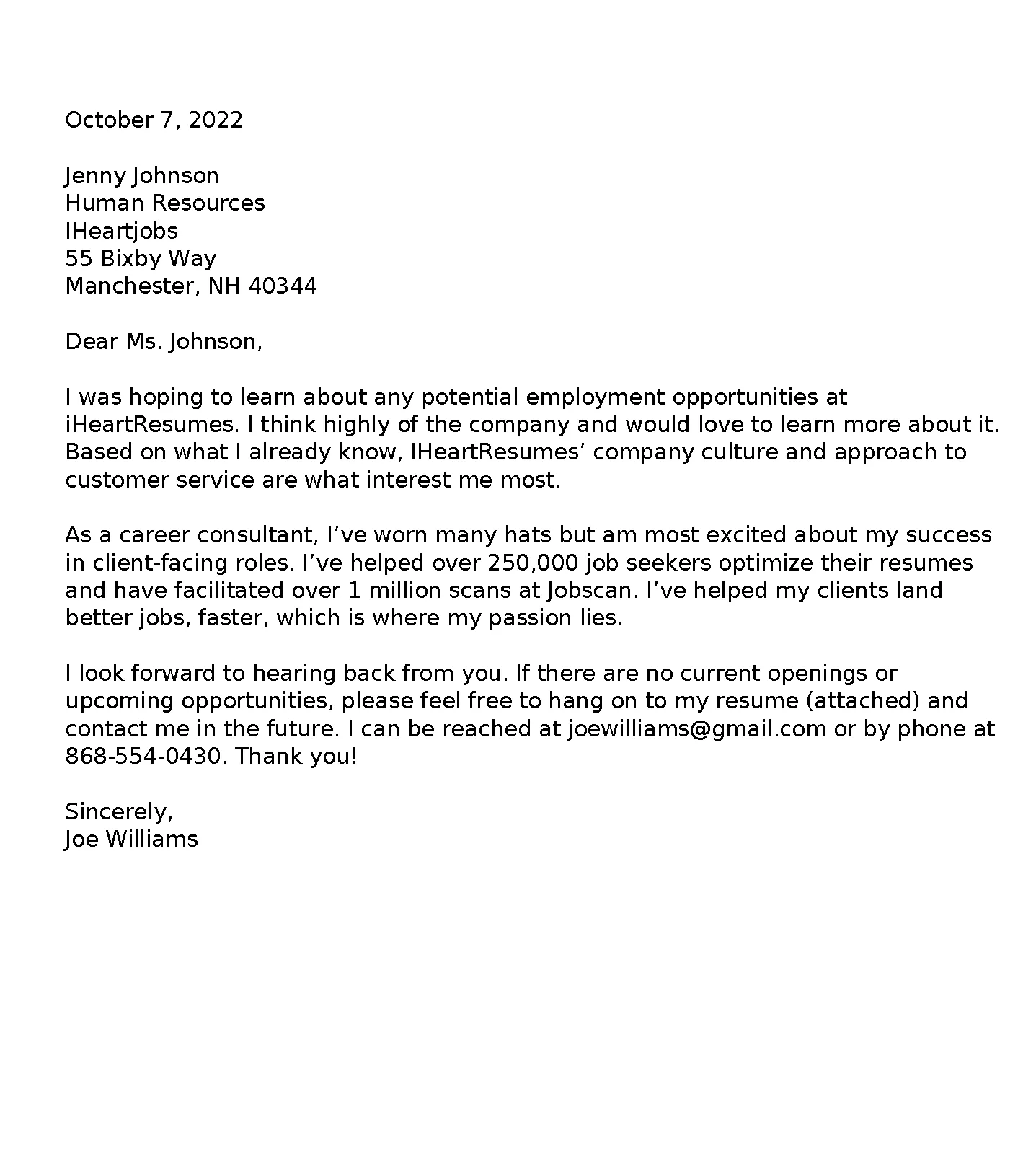
Your introduction is the gateway to the rest of your cover letter and, by extension, your resume. It’s the first impression, and as the saying goes, you only get one chance to make a first impression. A weak or generic introduction can lead to immediate dismissal, regardless of the strength of your qualifications. A compelling introduction signals professionalism, attention to detail, and genuine interest. It can differentiate you from other candidates and significantly increase your chances of securing an interview. This initial paragraph sets the tone for the entire application and dictates the reader’s perception of your candidacy.
Key Elements to Include in Your Introduction
A successful introduction includes a few crucial elements. These components work together to create a strong, impactful opening that grabs the reader’s attention and communicates your suitability for the job. Each element serves a specific purpose, contributing to a well-rounded and effective introduction.
Your Name and Contact Information
While this might seem basic, including your name and contact information in the introduction is essential. This immediately identifies you and provides a clear way for the hiring manager to reach you. Make sure your contact details are accurate, professional, and up-to-date. Consider including your phone number and professional email address to facilitate easy communication. Double-check for any typos or errors to ensure that recruiters can easily connect with you if they are interested in your application.
Mentioning the Specific Job and Company
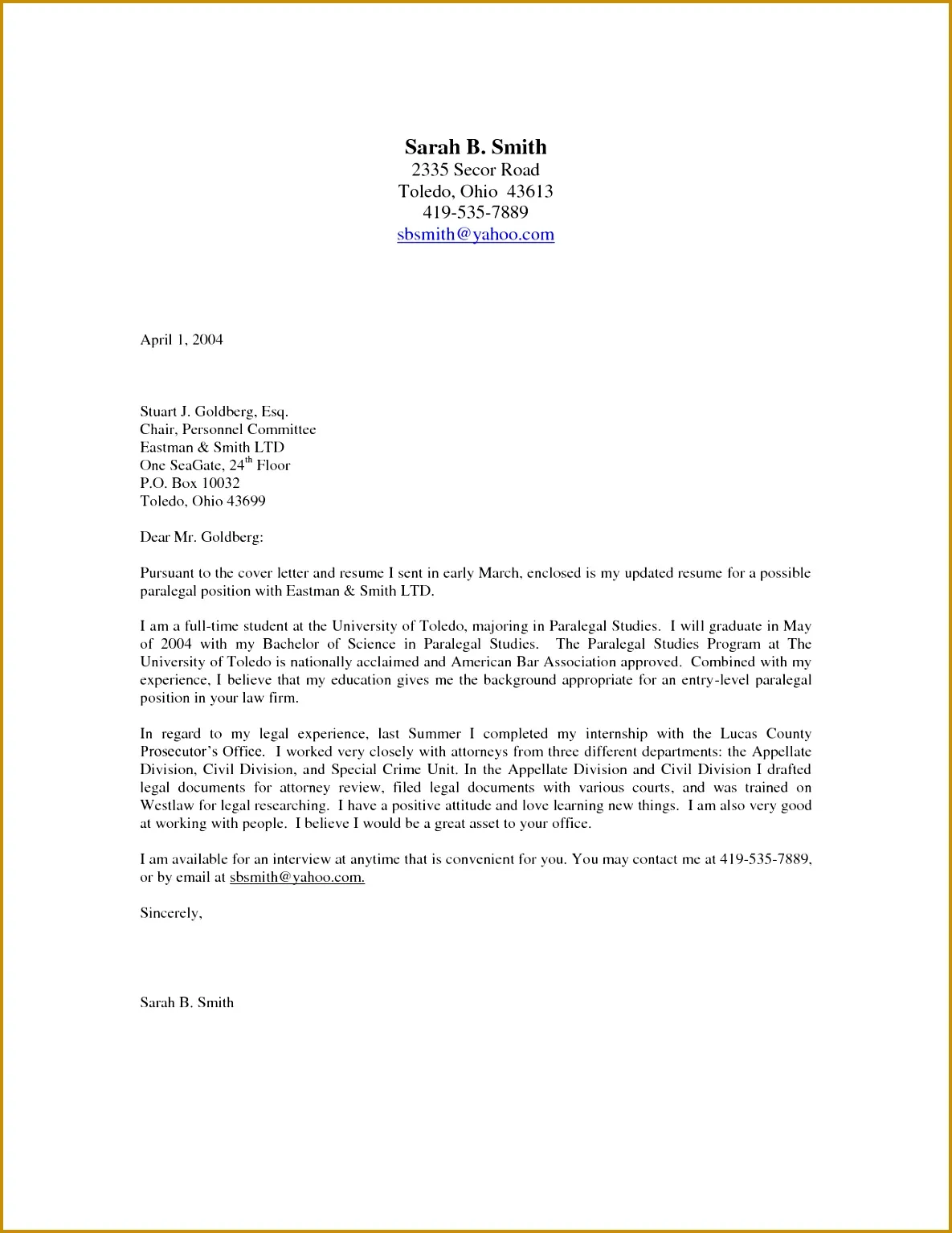
Clearly state the specific job you are applying for and the name of the company. This immediately demonstrates your awareness of the opportunity and your interest in the organization. Avoid generic introductions that could be used for any job. Tailor your introduction to match the specific requirements of the role. Refer to the job title exactly as it appears in the job posting to show you’ve paid attention to the details. This personalization signals to the hiring manager that you have a genuine interest in their company.
Highlighting Your Key Skills and Experience
Briefly mention your most relevant skills and experience that align with the job requirements. This gives the reader a quick snapshot of your qualifications and immediately shows why you’re a good fit. Focus on the key skills mentioned in the job description. Quantify your accomplishments whenever possible to show your impact. For instance, if the job description requires project management skills, you might mention your experience managing projects, the budget or the team involved. Doing this right away can create an immediate connection with the recruiter.
Stating Your Enthusiasm for the Opportunity
Expressing your genuine enthusiasm for the opportunity is a crucial part of the introduction. This shows the hiring manager that you are not only qualified but also excited about the prospect of joining their team. Clearly communicate your interest in the role and the company. Briefly explain why you are interested in this specific opportunity. This could include the company’s mission, culture, or the specific challenges the role presents. Your enthusiasm helps create a positive initial impression and makes your application more memorable.
Structuring Your Cover Letter Introduction
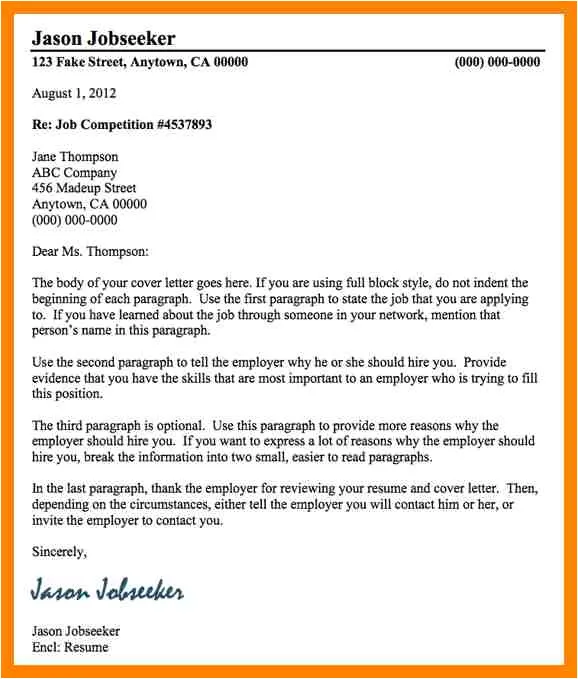
Choosing the right structure for your introduction can significantly impact its effectiveness. Several approaches can be used to create an engaging opening. The best structure will depend on your personality, the job, and the company culture. Experiment to see which one best suits your application.
The Direct Approach
The direct approach is straightforward and efficient. It involves immediately stating your purpose, the job you’re applying for, and your key qualifications. This is perfect when you want to be concise and to the point. For example: “I am writing to express my interest in the Marketing Manager position at [Company Name], as advertised on [Platform]. With five years of experience in digital marketing and a proven track record of increasing brand awareness, I am confident I can contribute to your team’s success.”
The Summary Approach
The summary approach provides a brief overview of your skills and experience, summarizing your value proposition. It’s ideal when you want to immediately highlight your strengths. Example: “A highly motivated marketing professional with a proven track record in driving revenue growth seeks the Digital Marketing Specialist position at [Company Name]. My expertise in SEO, content marketing, and social media aligns with your requirements, and I am eager to contribute to your team’s goals.”
The Question Approach
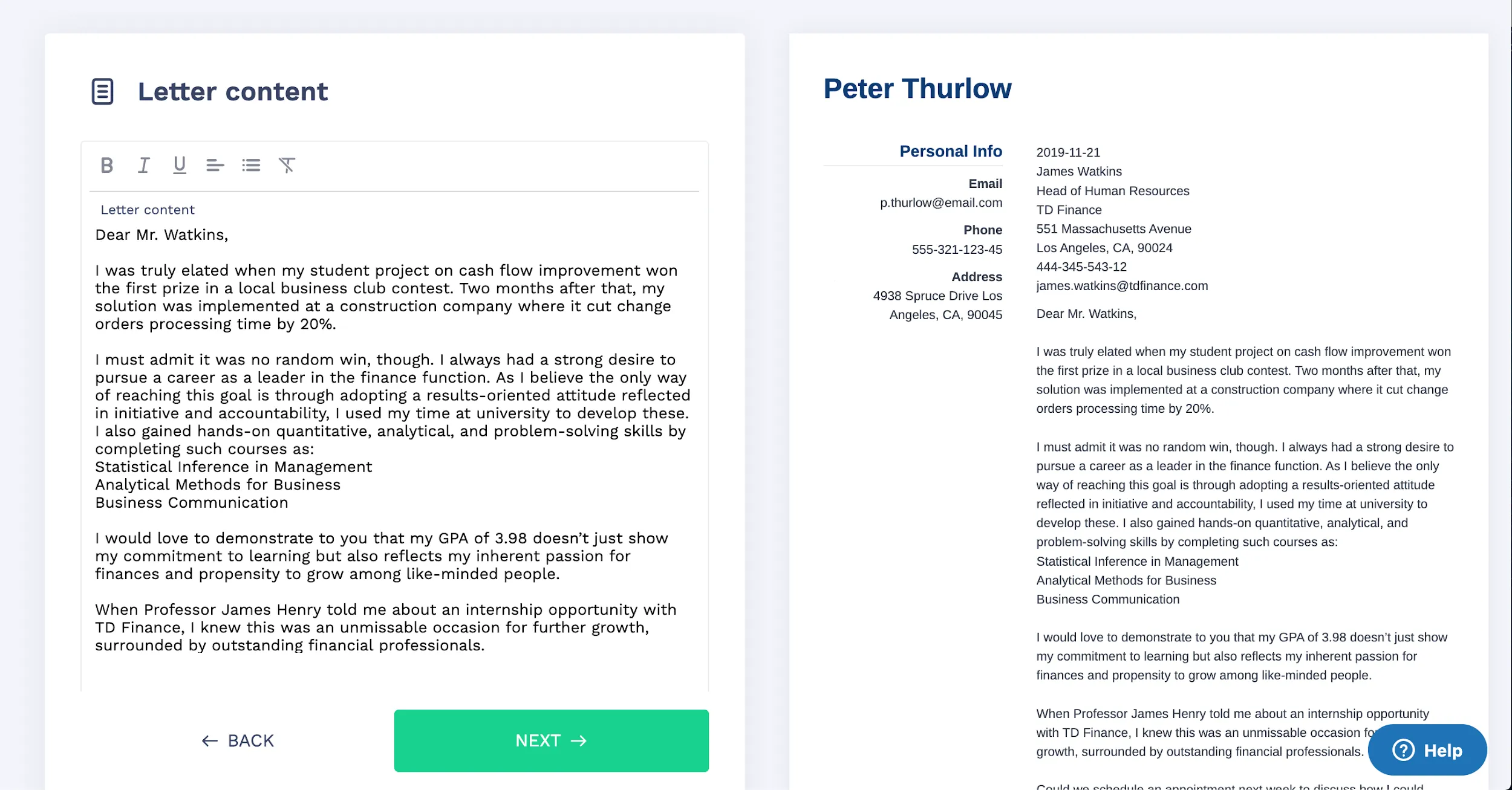
The question approach aims to engage the reader by asking a compelling question related to the job or company. This sparks curiosity and encourages the reader to find out more. However, use this carefully; it needs to be relevant and insightful. For example, “Are you looking for a project manager who can deliver results under pressure? With my extensive experience in managing complex projects and delivering them on time and within budget, I believe I’m the right fit for your team.”
The Referral Approach
If you were referred by someone, this is an effective way to start your introduction. Mention the referrer and their relationship to the company or role. This can provide an immediate connection and establish credibility. Example: “[Referral Name] suggested I reach out to you regarding the Software Engineer position. As a software engineer with experience in [relevant technologies], I am eager to contribute to [Company Name]’s innovative work.”
Avoiding Common Mistakes in Your Introduction
Avoiding common pitfalls is crucial for crafting an effective introduction. Be mindful of these common mistakes.
Generic Introductions
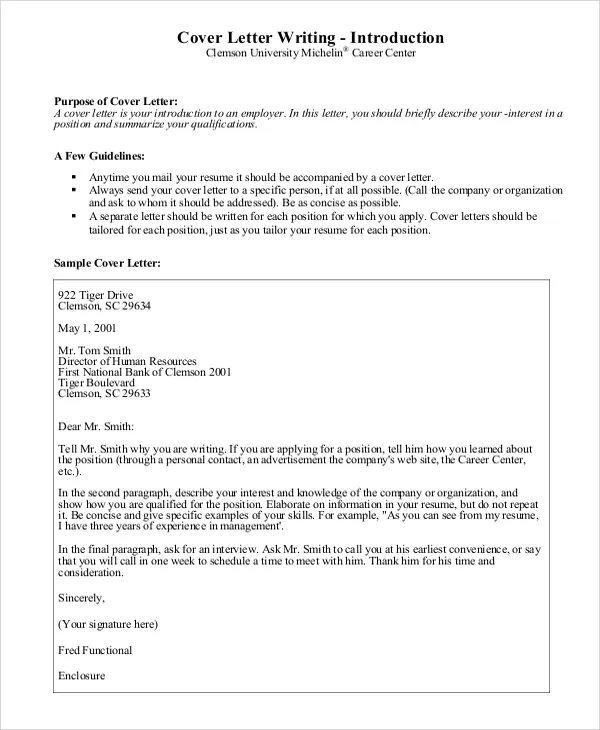
Avoid using a generic introduction that can apply to any job. Tailor your introduction to the specific job requirements and company. Customize your introduction to demonstrate your understanding of the role and the company’s needs. Generic introductions often lead the hiring manager to believe you haven’t put much thought into your application.
Focusing Solely on Yourself
While you should highlight your skills and experience, don’t solely focus on yourself. Balance your self-promotion with a demonstration of how you can contribute to the company’s success. Show that you understand the company’s needs and how your skills can address them. Recruiters are looking for candidates who can benefit the company.
Typos and Grammatical Errors
Typos and grammatical errors are a major turn-off. Proofread your introduction carefully before sending it. Use a grammar checker and have someone else review it. These errors make you appear unprofessional and can undermine your credibility. Always check for errors before submitting your application.
Making a Strong First Impression
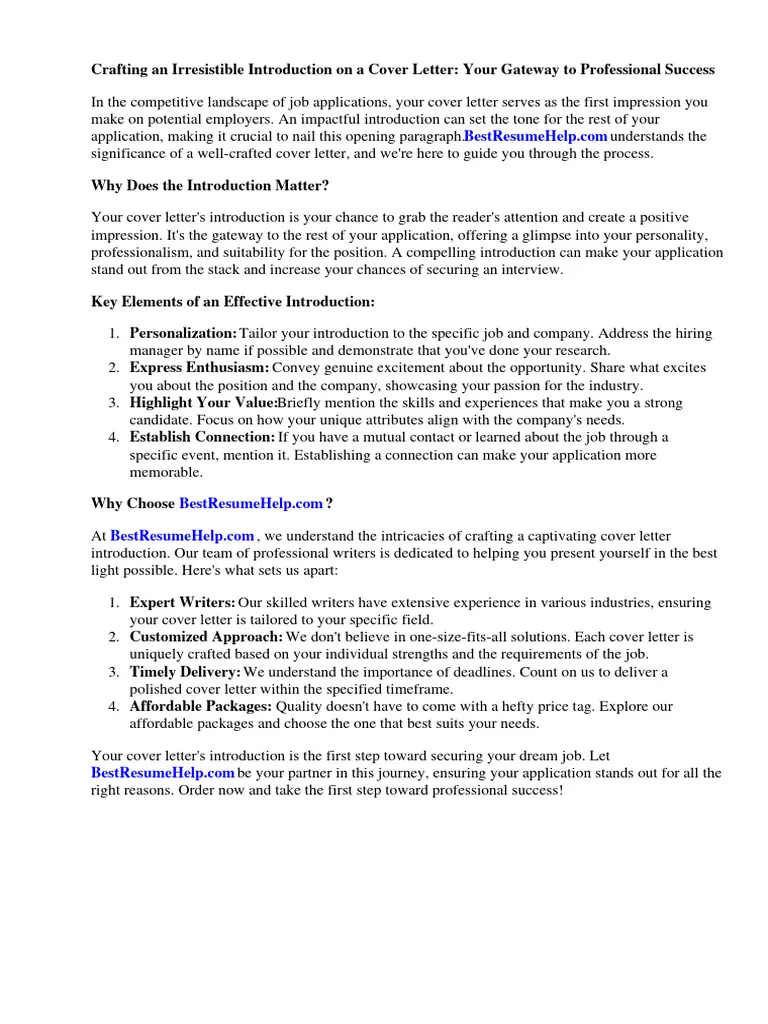
Your introduction is your first opportunity to make a positive impression, so make it count.
Using Action Verbs
Use strong action verbs to describe your skills and experience. This makes your introduction more dynamic and engaging. Examples include “managed,” “developed,” “led,” “implemented,” and “achieved.” Action verbs provide a clear idea of what you can do and keep the reader interested.
Tailoring to the Specific Job
Always tailor your introduction to the specific job you’re applying for. Refer to the job description and highlight the skills and experiences that match the requirements. Demonstrating that you have the skills that they are looking for proves you’re a good fit.
Showcasing Your Personality
Let your personality shine through your introduction. Use a professional tone, but don’t be afraid to add a touch of your unique character. This will make your introduction more memorable and help you stand out from other applicants.
Reviewing and Refining Your Introduction
Once you’ve written your introduction, take the time to review and refine it. Ensure it is clear, concise, and accurately reflects your skills and experience. Proofread your introduction to eliminate any errors. The more time you put into the revision process, the better the result will be.
In conclusion, crafting a compelling cover letter introduction is a vital part of the job application process. By following these tips, you can create an introduction that grabs the hiring manager’s attention, showcases your qualifications, and significantly increases your chances of getting an interview. Remember to tailor your introduction to each job, use action verbs, and always proofread. Your introduction is the first step toward landing your dream job; make it count!
